Carbuyer glossary of terms
Our guide to words and abbreviations you may encounter when buying, owning, or maintaining a car
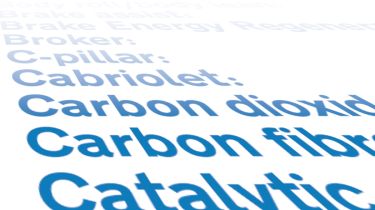
Car speak can be a confusing thing to get your head around, especially when you're at the dealer trying to make an important decision about your new car. The last thing you want is the salesman to be saying all sorts of things that you don't know the meaning of, so we've put together this comprehensive guide of all the words, terms, phrases and abbreviations you'll come across when you're buying, owning or maintaining a car.
We've grouped them together in different categories, so everything will be much easier to digest.
Car types, car bodystyles and driving jargon
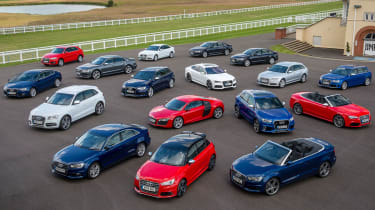
2+2: A seating arrangement commonly found in performance cars, where two small rear seats for occasional use are fitted behind the two front seats.
Allroad: A term used by Audi to denote an estate car with greater off-road capability and more rugged styling than a regular model.
Avant: A term used by Audi to denote its practical estate models.
Body roll/body lean: How much a car ‘leans’ to the side during cornering. Cars with softer suspension tend to lean more during cornering than cars with firmer suspension, and as such usually feel less agile.
Cabriolet: A car featuring a roof that can be folded down. Also known as a convertible.
City car: A small type of car that’s designed primarily for driving in towns and cities. Examples of city cars include the Skoda Citigo, Citroen C1 and Hyundai i10. Sometimes referred to as a micro car.
Company car: A car purchased and provided by a company for an employee to use. The driver of the car will often have to pay company car tax based on a ‘benefit in kind’ (BIK) rate that varies according to the value of the car and the emissions it creates.
Convertible: A car featuring a roof that can be folded down. Also known as a cabriolet.
Coupe: A bodystyle that usually features a low, sloping roofline. Most coupes have two doors and are two-seaters, though some newer models have four doors and up to five seats.
CC (bodystyle): A name usually given to a ‘coupe-convertible’, a car that features a folding metal roof. Also used by Volkswagen as the name of its four-door coupe.
Crossover: A car type that’s positioned halfway between a family hatchback and a sports utility vehicle. Examples of crossovers currently on sale include the Nissan Qashqai, Renault Captur and Skoda Yeti.
Estate: A car bodystyle that features a large, often boxy rear end, designed to increase the car's bootspace.
EV (electric vehicle): A car that runs purely on electricity, without any onboard power generators. Examples of electric cars are the Nissan LEAF, Renault ZOE and the BMW i3. Considering buying an electric car? Read our tips and advice to see which model might suit you.
Ex-demo: Shortened down from ex-demonstrator. A car once used by a dealership to offer and conduct test-drives in. Ex-demos are often sold after a few months as a used car at a reduced price. Considering buying an ex-demo car? Read our tips and advice first.
Facelift: An update given to the exterior and/or interior of a car, part way through its life.
Fastback: A two or four-door car with a sloping rear. A name currently used by Mazda for the saloon version of its Mazda3 hatchback.
Firm ride: A side-effect of having a stiffer suspension setup.
Hatchback: A bodystyle type, where the top of the boot hatch hinges from roofline of the car providing a practical and wide-opening boot aperture.
Hot hatch: The unofficial term for a fast hatchback model.
Hybrid: A type of car where the engine is supplemented by additional power from an electric motor.
Hydrogen fuel cell: An alternative powertrain that converts hydrogen into energy that’s used to run an electric motor. No car currently on sale in the UK is fitted with a hydrogen fuel cell. Considering buying a hybrid car? Take a look at our tips and advice before you make up your mind.
Micro car: A small type of car that’s designed primarily for driving in towns and cities. Examples of city cars include the Skoda Citigo, Citroen C1 and Hyundai i10. More often referred to as a city car.
Mini-MPV: Similar to an MPV, though often not as tall or as long as traditional MPVs. Examples of Mini-MPVs include the Ford B-MAX, Citroen C3 Picasso and Fiat 500L.
MPV (multi-purpose vehicle): A taller type of vehicle that’s designed to provide as much interior space as possible. Also used occasionally as a blanket term for any car with more than five seats. Examples of MPVs include the Citroen Grand C4 Picasso, SEAT Alhambra and Ford S-MAX. If you're in the market for an MPV, make sure you take a look at our list of the best people carriers on sale.
PHEV (plug-in hybrid electric vehicle): See Plug-in hybrid.
Plug-in hybrid: A type of hybrid powertrain where the battery packs can be replenished by plugging it into an electrical socket, or by using the car’s engine. Examples of plug-in hybrids are the Mitsubishi Outlander PHEV, Volvo V60 Plug-in Hybrid and BMW i8. Are you considering a PHEV? Read our tips and advice to help you decide if it's the right choice for you.
Range-extender: Similar to a plug-in hybrid, but the engine is only used to recharge the batteries once they’re flat. Examples of range-extender cars are the Chevrolet Volt, Vauxhall Ampera and BMW i3 Range Extender. Could a range-extender be the right type of car for you? See what we think by reading our tips and advice.
Roadster: Two-door convertible. Also known as a convertible.
Saloon: A car body style where the boot lid is usually hinged just below the rear window.
Station wagon: A car bodystyle that features a large, often boxy rear end, designed to increase the car's bootspace. Also known as estate.
Steering feel/feedback: The amount of ‘information’ being transmitted from the tyres on the road surface, up the steering column, through the steering wheel and into the driver’s hands. Good steering feel makes it easier to corner quickly and confidently.
Supermini: A type of car that’s smaller than a conventional family hatchback, but larger than a city car. Examples of superminis include the Volkswagen Polo, Ford Fiesta and Renault Clio. Our list of the best small cars sums up the top cars on sale today.
SUV (Sports Utility Vehicle): A term used to denote a high-riding car (usually with off-road capabilities) with a partial emphasis on sporty handling characteristics. Sometimes used as a blanket term for large all-wheel drive cars. Looking to buy one? Make sure you take a look at our list of the best 4x4s and SUVs.
Targa: A car bodystyle where the roof section can be opened electrically or through removing the roof panel(s) manually. Shouldn’t be confused with a convertible.
Tourer/Touring: A car bodystyle that features a large, often boxy rear end, designed to increase the car's bootspace. Also known as estate.
Two-door: A car bodystyle that only features two side doors. Some two-door cars are strictly two seaters, though four and five seat models are available.
Volkswagen Group: The umbrella company for a wide array of vehicle brands. Car manufacturers currently owned by the Volkswagen Group are Audi, Bentley, Bugatti, Lamborghini, Porsche, SEAT, Skoda and, of course, Volkswagen.
Car exterior features
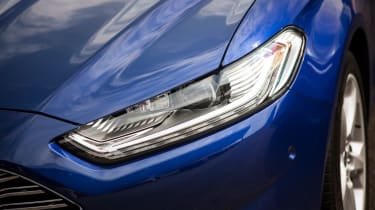
A-pillar: The front support pillar for the car’s roof, which holds the car’s windscreen.
B-pillar: The support pillar for the car’s roof, located between the front and rear doors. Some cars on sale today, such as the Ford B-MAX, don’t have B-pillars to allow for better access to the car’s rear seats.
C-pillar: A support pillar for the car’s roof, located behind the rear doors. Is also referred to as a C-pillar on cars that don’t feature a B-pillar.
D-pillar: The rearmost support pillar for the roof on estate cars, located just in front of the boot lid.
Adaptive suspension: A feature that can be used to alter the firmness of the suspension and/or the car’s ride height in order to provide a sportier or more comfortable drive.
Active/adaptive headlights: Headlights that ‘look’ around upcoming corners, giving the driver a clearer view of the road ahead when compared with conventional headlights. Some versions can remain on full beam even when there’s oncoming traffic – shutting off certain bulbs to prevent blinding.
Air suspension: A type of suspension system that uses compressed air instead of a more conventional sprung set-up. In theory, this should make the car’s ride more comfortable over rougher surfaces. Such systems can also be used to vary the car’s ride height.
Alloys (alloy wheels): A type of wheel rim made from a mix of metals and available in a wide range of designs. Most cars on sale today come fitted with alloy wheels as standard or as an optional extra.
Automatic lights: Dipped headlights that switch on automatically via a ‘dusk sensor’. When the sensor detects it is getting dark, the lights come on
Automatic wipers: see rain-sensing wipers
Carbon fibre: A strong, lightweight and expensive-to-produce material that’s used by some manufacturers for interior trim pieces, body panels and core structures. Often found on high-end sports cars and performance cars.
Chassis: The part that forms the central structure of a car that major components such as the suspension and engine are attached to.
Daytime running lights: Lights on the front of the car that are switched on permanently to boost a car’s visibility to other drivers. Can be normal halogen lights or LED
Gesture tailgate/hands-free tailgate: Tailgate which automatically opens via waving your foot underneath the rear bumper
Keyless entry: A system that automatically unlocks the car when the owner’s key fob is in close proximity. The car is usually then started by a push button.
LED lights: A device that provides a brighter light than conventional lamp bulbs, whilst using less energy. Many new cars come fitted with LED daytime running lights as standard.
Parking sensors: A feature that aids parking manoeuvres by alerting the driver to any obstacles that may be in blind spots. Parking sensors are offered by some car manufacturers as standard equipment or as an optional extra.
Parking camera: Often mounted above the rear numberplate, a parking camera can be specified instead of or in addition to parking sensors. It shows a visual image on the car’s screen. Many cars now have cameras all around the whole car now
Rain-sensing wipers: Windscreen wipers that switch on automatically when rain is detected on the sensor
Remote Central Locking: A feature that allows the driver to lock or unlock the car, usually by pushing the appropriate button on the key fob.
Tailgate: A term usually given to bootlids fitted on hatchback or estate cars.
Tinted windows: Windows on a car (usually those on the doors) that have been covered in a fine coloured film, for aesthetic purposes and/or to reduce the amount the light and glare coming into the interior.
Car interior features
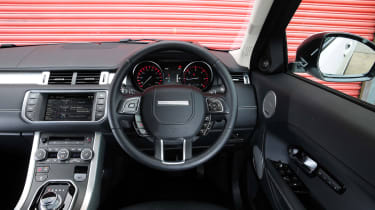
50:50 split folding: An arrangement where one of the two rear seat backs can be folded forwards and the other left in place.
60:40 split folding: Much like 50:50 split folding, except mostly applicable for cars with three rear seats. Two seat backs can be left up and one folded forwards, or vice versa.
Air conditioning: A feature that warms or cools the interior of a car by pumping air in, through vents on the dashboard or in the footwells.
Airbags: A safety device that quickly inflates a bag of air during a car crash, to cushion the occupants and reduce the risk of injury. Most cars feature multiple airbags as standard.
Alcantara: A suede-like material used by many car makers as an interior finish, usually on seats or controls that the driver regularly uses – such as the steering wheel and gear lever.
Bluetooth: A system that allows the car to connect with various electronic devices (mobile phone, headset etc.) wirelessly in or near the car. This allows drivers to safely make phone calls without breaking the law.
Climate control: Similar to air conditioning, but it allows the user to set a temperature which the system maintains irrespective of conditions outside the car.
Cruise control: A system that can maintain a car at a preset speed, without the need for the driver to use the accelerator or brake pedals.
DAB radio: An abbreviation for a digital radio, which stands for ‘Digital Audio Broadcast’, which offers more radio stations to be tuned into anywhere. Most cars come with this as standard now.
Head-up display: A device that displays the main instrumentation onto the windscreen in the driver’s line of sight. In theory, this reduces the risk of an accident as the driver’s eyes are always looking at the road ahead.
Infotainment system: Refers to the central system on the dashboard that controls the radio, sat-nav, audio etc. Often in the form of a touchscreen in modern cars, or controlled via a rotary control on the centre console.
Multifunction steering wheel: A steering wheel with buttons and controls on for things like audio and cruise control
Panoramic roof: A pane of glass like a sunroof that runs along most of the car’s roof, to allow more light into the interior. Some car manufacturers offer a panoramic roof as standard or as an optional extra.
Satellite navigation: A device that uses satellite and road map data to plot a route from one location (usually set to where the car is by default) to another. Some cars can be equipped with a built-in sat-nav as standard or as an optional extra. You can also buy one as an aftermarket accessory - but make sure it's one of our recommended units.
Split folding seats: A feature that allows separate seat backs to be folded to increase the boot’s stowage capacity, instead of folding the entire rear seat back forwards.
Measurements/engines/technical
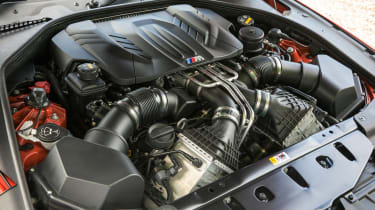
0-60mph: A statistic car manufacturers use to denote the acceleration of a car from a standstill to 60 miles per hour. Increasingly being phased out in favour of 0-62mph.
0-62mph: Similar to 0-60mph, but easier to convert from the metric units used in other car markets (62mph is approximately 100 kilometres per hour).
4x4: A system which distributes the engine’s power to all four of the wheels on the car.
ACT (Active Cylinder Technology): A feature developed by the Volkswagen Group that improves overall fuel consumption, by shutting off some of the engine’s cylinders when cruising. Also known as Cylinder on Demand (CoD).
All-wheel drive: A system which distributes the engine’s power to all of the wheels on the car.
BHP: Stands for Brake Horse Power, and is used to measure the maximum amount of power a car’s engine can produce.
BMW EfficientDynamics: The brand name BMW uses for its fuel and energy-saving technologies. Some of the more efficient models in each range, such as the BMW 320d ED, are also labelled as ‘EfficientDynamics’ cars.
Carbon dioxide/CO2: A gas type that’s emitted from a car’s exhaust pipes when the engine is running. How much CO2 your car emits over a kilometre affects your annual car tax (see VED) and London Congestion Charge rates.
Catalytic converter: A device fitted to a car’s exhaust system that converts toxic gases produced by the engine into less toxic gases.
CC (engine size): A figure used to denote how big a car’s engine is in cubic centimetres. Can be interchanged with litres (e.g. 1,600cc is the same as 1.6-litre).
CVT: A type of automatic gearbox. Most hybrid cars currently on sale can only be equipped with a CVT, but a number of petrol and diesel models also use this type of gearbox.
Cylinder: The core of a car’s engine. The capacity of the cylinder(s) makes up the engine’s overall size, which is almost always referred to as litres or cubic centimetres (cc). They can be arranged in a line, flat, V or W formation. The number of cylinders in most car engines usually ranges from 2 to 8, though up to 16 are possible.
Cylinder deactivation technology: A feature developed by the Volkswagen Group that improves overall fuel consumption, by shutting off some of the engine’s cylinders when cruising.
Diesel: A type of liquid fuel. Most diesel engines are characterised by improved fuel economy and lower CO2 emissions, but higher levels of other gasses. Diesel fuel is usually more expensive to buy than petrol. If you're looking to buy a diesel car, take a look at our list of the best diesel cars on sale.
DSG: A type of automatic gearbox used on Volkswagen Group cars. The innovative system features two clutches to provide smoother and faster gear changes. Most DSGs allow the driver to change gears manually using paddles on the steering wheel.
Four-wheel drive: Same as all-wheel drive
Four-wheel steering: System which turns the rear wheels as well as the front wheels to aid agility and manoeuvrability of a car.
Front wheel drive: A type of drivetrain used on cars, where the engine’s power is transmitted to only the front wheels.
Fuel economy: The rate at which a car’s engine consumes fuel. Fuel economy is usually cited as a miles per gallon (MPG) figure. Take a look at our list of the most economical cars on sale.
g/km: A measurement of CO2 emissions, calculated as the number of grams of carbon dioxide a car produces over a kilometre.
Litre: A measurement used by the motoring industry to denote the size of the fuel tank, as well as the stowage capacity of the boot. Also used to describe an engine’s size, such as “1.6-litre”
LPG (Liquefied petroleum gas): An alternative fuel type that can be used to run a conventionally-powered petrol or diesel car. Although few car manufacturers offer an LPG car in the UK, most petrol-powered cars can be converted to run on LPG.
MPG (miles per gallon): The rate in which fuel economy is calculated. Take a look at our list of the most economical cars.
MPH: Stands for miles per hour.
Petrol: A commonly-used type of liquid fuel. Petrol engines are usually characterised as being quieter than diesel engines, though tend to use more fuel and emit higher amounts of CO2.
Rear-wheel drive: A configuration where the engine’s power is transmitted to the rear wheels of the car.
Semi-automatic: A gearbox type that the driver can set up as a conventional automatic, or change gears themselves by using buttons or paddles on the steering wheel or steering column.
Stop-Start: A device that improves fuel consumption, by turning off the engine when the car is stationary.
Supercharger: A component that’s powered by the engine and used to force more air into the engine. This results in an increase in power and torque, though often at the expense of fuel economy. More recently, the term Supercharger has been used by Tesla as a brand name for its extensive fast-charging network, allowing drivers to top up their car's batteries at service stations and rest areas.
TDI: A type of diesel engine that’s fitted with at least one turbocharger. TDI is also most commonly associated with the Volkswagen Group’s range of diesel engines.
Torque: The amount of pulling power a car’s engine has. Usually denoted by car manufacturers in pounds-per-square-foot (lb/ft) or Newton metres (Nm).
Traction Control: A feature fitted on most cars that limits how much power is sent to the driven wheels, thus reducing the chance of wheel spin. Some cars feature a mode that turns off the traction control entirely.
Turbocharger: A component designed to improve a car’s performance and efficiency, by forcing more air into the engine. Unlike a supercharger that is powered directly by the engine, the engine exhaust gasses power the turbocharger.
Turbodiesel: A type of diesel engine that’s fitted with at least one turbocharger to improve CO2 emissions.
VIN (Vehicle Identification Number): A 17-character serial number that’s used to identify specific cars. Every road-going vehicle has its own unique VIN, which can be found on the door post on the driver’s side.
Wheelbase: The floor space in between the front and rear wheels of a car. The seats in almost all cars are situated inside the wheelbase meaning that in most cases, the longer the wheelbase, the more interior space there is.
Car safety and security
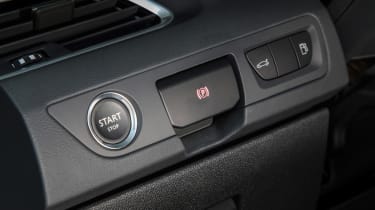
ABS: A safety feature that improves the controllability of the car, by reducing the chance of the wheels locking up and skidding – allowing you to steer the car even under heavy braking.
Anti-lock brakes: See ABS.
Active/adaptive cruise control: Much like cruise control, but can automatically match the speed of the car ahead, maintain a safe distance from it, then return to a preset cruising speed when the road is clear.
Automatic dipping headlights: A feature that automatically dips the headlight’s main beam, when the car approaches a vehicle or passes oncoming traffic to avoid blinding other road users. When the traffic has passed, the system returns the headlights to full beam without the need for driver input.
Autonomous braking: A safety system that reduces the chance of low speed crashes, by applying the brakes if it detects an imminent frontal collision. Also called automatic emergency braking or autonomous emergency braking. Many car manufacturers have their own brand names for this, such as Volvo City Safety.
Blind-spot monitoring: A system that alerts the driver to a car in its blind-sport when changing lanes on the motorway. Often signaled via a light in the side mirrors and sound alert
Brake assist: A safety device that applies additional pressure to the brakes during emergency stops.
Brake Energy Regeneration: A feature found on most electric and hybrid cars (as well as some conventionally-powered cars), which uses energy recovered from braking to recharge the battery.
EBA (Electronic brake assist): A safety device that applies additional pressure to the brakes during emergency stops.
EBD (Electronic Brakeforce Distribution): A safety system that alters how much pressure is applied to the brakes, reducing the chance of the wheels from locking up under heavy braking and improving stability.
EGS: The brand name for Citroen’s automatic gearbox.
Electric Power Steering: A feature found on most new cars that reduces the amount of effort required to turn the steering wheel. Is at it’s most useful during low-speed manoeuvres.
ESC (Electronic Stability Control): A safety feature that reduces the risk of the car spinning. Is at it’s most useful on slippery road surfaces and during sudden direction changes.
ESP (electronic stability program): See ESC.
Euro NCAP: An assessment board that measures the safety credentials of a car, and rates the overall score out of five ‘stars’. The more stars a car has, the safer it is for occupants and pedestrians. Most cars are simply awarded one to five stars, but from 2016 some have been given two different star ratings. If you see a car with two Euro NCAP ratings, one refers to how the car fared in standard form, while the other is based on how much protection it provides when fitted with an optional safety pack. Check out our advice article, detailing all you need to know about Euro NCAP.
Hill Descent Control: A feature that increases the controllability of a car when driving down steeper surfaces. Usually found on cars with some form of off-road capability.
Hill Start Assist: A feature that prevents the car from rolling up or down a gradient when the driver is attempting to pull away from a standing start.
ISOFIX: A set of mounting points on a car seat where a child safety seat can be securely attached.
Lane Departure Warning: A system that notifys the driver of the car’s deviation from the road.
Power steering: A feature found on most new cars that reduces the amount of effort required to turn the steering wheel. Is at it’s most useful during low-speed manoeuvres.
Run-flat tyres: A tyre that’s designed to resist the effects of a puncture, allowing drivers to maintain control over the car should the tyre deflate.
Vehicle costs
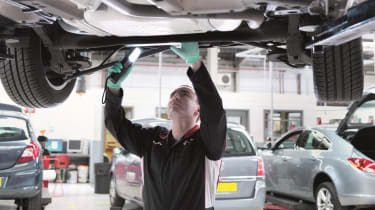
Benefit in Kind (BiK): A tax paid by employees who receive perks or benefits in addition to their salary, such as a company car. Every car has a Benefit in Kind (BiK) rating that's based on CO2 emissions and the car's P11D value.
Company car tax: The amount of tax you'll pay to drive a company car. The amount you pay is based on the P11D value of the car and the BiK banding which is based on emissions.
Depreciation: The amount of value your car will lose over time. Depreciation is usually expressed as a percentage of the original value that's retained after three years and 36,000 miles. It's a useful way of comparing the value one car will retain compared to another. Remember that the the official depreciation percentage doesn't take into account any optional extras you pay extra for. All future values will depend on the vehicle's condition, the desirability and demand for that model, how it's been maintained and its mileage.
MoT: The test and certificate system that’s used to ascertain the roadworthiness of a car. It is illegal to drive a car on public roads without a valid MoT certificate displayed. Follow our MoT checklist and help your car pass first time.
P11D: A tax form completed by your employer and send to the tax office that outlines the value of your benefits, including your company car. Your car's P11D value takes into account its list price plus optional extras including VAT and delivery charges, but doesn't include the car's road tax or first registration fee.
PPM (Pence Per Mile): The amount of money it costs to run a car per mile, factoring in variables such as purchase price, fuel economy, depreciation, road tax, mileage and servicing and maintenance.
Residual value (RV): See depreciation
Road fund licence/road tax: The annual tax that’s dictated on the CO2 emissions of your car over a kilometre-long drive. Cars that emit less than 100 grams per kilometre of CO2 are exempt from road tax. Also known as VED. Find out what tax band your car falls into, by reading our round-up on current car tax bands.
Tax band: A category that dictates your VED tax fee. For more information, see CO2 and VED, or read our tips and advice on car tax bands.
V5C: The official document distributed by the DVLA that’s used to provide proof of ownership of a car.
VED (Vehicle Excise Duty): The annual tax that’s dictated on the CO2 emissions of your car over a kilometre-long drive. Cars that emit less than 100 grams per kilometre of CO2 are exempt from VED. Find out how much your new car will cost you, by taking a look at our explanation of current car tax bands.
WLC (Whole life cost): The overall amount of money a car costs over an ownership period, from initial purchase to resale time/disposal at the end of the car’s working life.
Car insurance
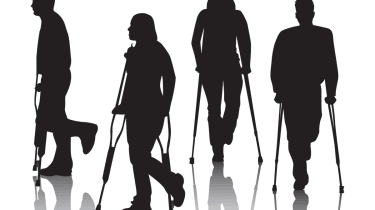
GAP (Guaranteed Asset Protection) Insurance: An insurance type that pays out the difference between the amount of money the insurance provider pays out for a written-off or stolen car, and the amount of money originally spent on the car (as long as the car’s value doesn’t exceed the amount it was worth when originally bought).
Insurance: An agreement for an organisation to provide financial compensation should a vehicle be stolen, damaged or involved in a collision. Payments can be made to the vehicle’s owner (policy holder) or any third parties harmed in an event. It is illegal to drive a car on public roads in the UK without insurance cover. Unsure which insurance provider to go with? Make sure you read our top 10 list of car insurance companies.
Insurance group: The band that dictates the insurance fee. The higher the group your car is categorised in, the steeper your insurance premiums will be. Groups range from one to 50. Take a look at our list of the top 10 cheapest cars to insure.
Whiplash: The term given to neck injury caused by the head being suddenly moved forwards, backwards or sideways. Sudden car collisions are amongst the most frequent causes of whiplash in the UK.
Write-off: A car that has been stolen or damaged, and deemed unsafe or uneconomical to repair. However, some cars are subsequently repaired and re-approved for road use. Before you buy one, read our tips and advice on Cat-D cars and insurance write offs.
Car finance
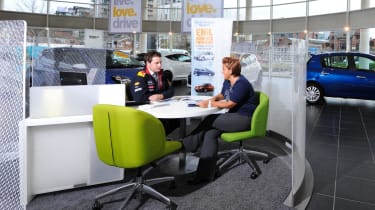
APR: Stands for Annual Percentage Rate, the borrowing and interest fees that are charged on top of the money taken out for a loan.
Balloon payment: The final repayment instalment of a Personal Contract Purchase (PCP) loan that’s larger than the previous instalments. Also known as the GMFV (Guranteed Minimum Future Value).
Broker: Someone who oversees the purchasing process on behalf of the person buying the car. Find out more by reading our guide to buying a new car from a broker.
Contract hire: A system that allows drivers to lease their car by paying a monthly tariff. Mostly used by business users. Also known as leasing.
Interest: The amount of money that has to be paid back on loans. Usually calculated as an annual percentage rate.
Lease: A system that allows drivers to lease their car by paying a monthly tariff. Mostly used by business users. Also known as contract hire.
PCP (Personal Contract Purchase): A type of car loan that reduces the regular monthly fee by rescheduling the remaining money due into one large final repayment. Depending on the terms and conditions, the final installment can be settled by either repaying the outstanding money in full, returning the car to the lender or using the remaining value of the car as a part or full deposit for a new car.
Buying a car
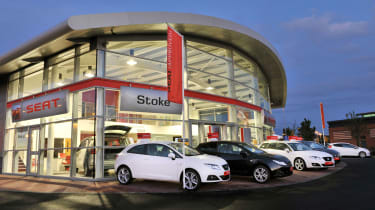
Dealership: The place where most new cars are sold. Many dealerships also stock used cars and provide car maintenance services.
Depreciation: The rate in which a car loses value, often in comparison with the amount of money spent when the car was originally purchased brand new. Usually calculated over a three-year period with the car covering 36,000 miles. Check out our top tips on how to avoid depreciation, and take a look at our list of the slowest depreciating cars.
DVLA (Driver and Vehicle Licensing Agency): The government body that maintains information on all cars and drivers registered in the UK. The DVLA also distributes driving licenses, collects money from vehicle road tax and sells private number plates.
Franchised dealership: A car dealership that’s licenced to sell cars on behalf of one or multiple manufacturers. Considering buying a car from a dealer? Read our tips and advice first.
HPI: An industry body that accumulates vehicle status information on every car that’s been registered in the UK. Is most useful for used car buyers, and provides information on whether the vehicle has been previously stolen, written-off or subject to outstanding finance. Make sure you get an HPI check before you buy your next used car.
Main dealership: A car dealership that has direct access to the manufacturer(s) of the cars it is selling. Most main dealerships can quickly source replacement car parts and upgrade the car’s software should an update be released by the manufacturer. A main-dealer service record is often preferable to one completed by a private garage. Considering buying from a main dealer? Read our tips and advice first.
Pre-reg: Shortened down from pre-registered, a term used to denote a new car with only delivery mileage on the odometer. The dealership selling the car is usually registered as its first owner. Need to know more? Read our tips and advice on buying a pre-reg car.
Spec/specification: A term used to describe the total specification of a car, as well as denote what’s included in any available trim packages.
Trim: A term used to describe the overall interior of a car, or the materials on a specific part or component (i.e. the door).
Trim level: The overall standard specification of a car’s interior. Many cars are offered in a wide variety of trim levels.
Warranty: Effectively an insurance policy covering the vehicle for the cost of replacement parts. Depending on the terms and conditions, a manufacturer will repair faults on cars that are still under warranty free of charge. Does not apply to wear-and-tear items such as tyres and brake pads. Need to know more? Read our tips and advice for all you need to know about car warranties.
Most Popular
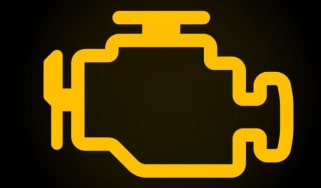
Engine management light: top 5 causes of amber engine warning light
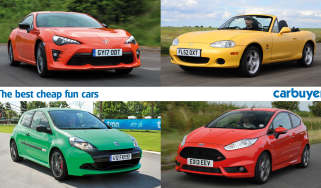
The best cheap fun cars from under £5k to over £10k

Best new car deals 2024: this week’s top car offers
Tips & advice








